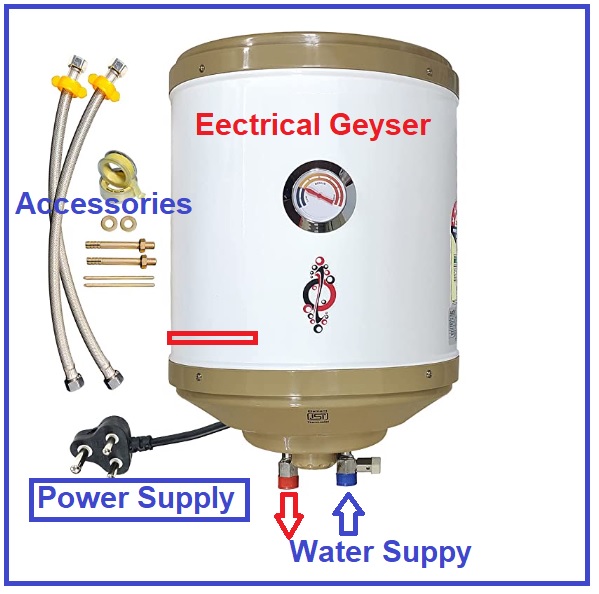Certain geyser sizes may not be suitable for low-pressure systems.
Certain geyser sizes may not be suitable for low-pressure systems.
Blog Article
How to Pick the Right Geyser to Optimize Power Effectiveness in Your Home
Selecting an energy-efficient geyser is not as uncomplicated as it seems, calling for cautious assessment of numerous elements. From recognizing the various sorts of geysers, to assessing their energy effectiveness ratings and considering positioning technique, each choice plays a vital role in taking full advantage of efficiency. Balancing the first investment with lasting savings is likewise essential. Allow's start this journey to uncover how to make one of the most enlightened choice for a hot spring that will decrease your power costs while guaranteeing optimum performance.

Understanding the Various Sorts Of Geyser
While there are different sorts of geysers offered on the marketplace, understanding the distinctions in between them is essential for power efficiency (geyser sizes). The very first kind, storage space geysers, are the most usual and store warm water in a storage tank for usage when needed. They are offered in various abilities and are typically energy-efficient, however they can shed heat when not in use
The 2nd kind is the tankless geyser, which warms water as needed, resulting in much less power waste yet requiring a higher preliminary power draw. There are warmth pump hot springs that use electricity to relocate warm from one place to an additional rather of creating heat directly. They can be two to three times much more power reliable than standard storage space hot springs. Last but not least, solar hot springs make use of solar power to warm the water, making them one of the most energy-efficient yet likewise one of the most costly.
Analyzing Your House's Warm water Requirements
Before diving right into the acquisition of a geyser, it is crucial to examine the hot water needs of your house. This evaluation ought to consider countless aspects including the variety of family members, regularity of warm water use, and the variety of hot water outlets in the home (geyser sizes). A tiny household with occasional hot water use could require a smaller, less powerful geyser contrasted to a larger family with numerous daily warm water requirements
The kind of appliances that call for warm water likewise play a substantial function. Dishwashers and cleaning devices, for circumstances, may need more warm water than a straightforward shower or kitchen area sink. Moreover, particular tasks such as bathing or cleaning additionally influence the regularity and quantity of warm water needed.
Reviewing Energy Effectiveness Rankings of Geyser
Having evaluated the warm water demands of your household, it is essential to transform your attention to the energy effectiveness rankings of hot springs. These ratings, typically provided as Power Variable (EF), show a geyser's overall energy effectiveness based upon the quantity of warm water generated each of fuel taken in over a common day. The higher the EF, the a lot more reliable the water heating system.

Considerations in Geyser Size and Positioning
Beyond power performance rankings, the dimension and placement of your geyser are important aspects to take into consideration. The dimension of the geyser need to line up with your household's warm water demands. A little geyser may use much less power but might not give sufficient warm water for multiple usages at the very same time, whereas a bigger unit can meet better need but might eat more power.
Placement additionally affects energy efficiency. Hot springs need to be set up near to factors of usage to reduce heat loss throughout water transportation. A centrally located geyser can service several locations successfully. Additionally, considering thermal insulation, a hot spring located in a warmer location loses much less warm and therefore makes use of less power to preserve the water temperature level.
Cost Analysis: Stabilizing Preliminary Financial Investment and Long-Term Savings
While dimension and positioning undoubtedly play considerable click this link duties in a geyser's energy performance, one should not ignore the financial element. When taking into consideration the initial financial investment, the rate of energy-efficient geysers can be greater than standard designs. Nonetheless, the increased in advance expense can be countered by long-term power financial savings, making it a worthwhile investment in the future.
Analyzing long-term cost savings needs an understanding why not find out more of the geyser's power ranking. A device with a higher rating will take in less power, equating to reduced energy costs with time. Government rewards and refunds for energy-efficient home appliances can additionally help redeem initial expenses.
Lastly, upkeep and lifespan must be factored in. Energy-efficient hot springs commonly have longer life-spans and reduced maintenance prices, adding to total financial savings. As a result, when balancing initial financial investment and lasting cost savings, one ought to think about not only the acquisition rate however likewise energy intake, federal government rewards, and maintenance prices.

Conclusion
These include recognizing the kinds of geysers, analyzing your family's warm water demands, examining energy performance scores, and calculating price benefits. The appropriate geyser size, positioning, and insulation can substantially reduce power bills and ecological impact.
Report this page